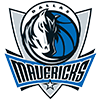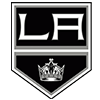It's more or less the midpoint of the NHL campaign now, which means the fantasy regular season is well past the halfway point. Do you know where your fantasy hockey team is? We all go into the draft and the start of the season expecting to be competitive. That's part of the appeal -- outside of supremely complex dynasty formats, we're not bogged down by contracts and no-move clauses, and there are few restrictions to get in our way. Those who play well stay on the roster, those who don't are punted to the waiver wire.
Here's where perspective comes in. One manager's disposable player can be the missing piece for another team. There's a certain joy that comes from finding a 90-plus-percent rostered player on the wire for free. Sometimes, it's an emotional move from an opposing manager. Other times, patience has just run out amid a slump.
I'll very rarely cut a preseason top-100 player from my roster without a season-ending injury involved. For the most part, there's a reason the player was projected to play that well. If they don't live up to expectations in October, the specter of a slow start can still follow them around even when things are going better.
Keeping things in perspective helps you separate good from bad. Segment the season, whether it's arbitrarily or by month or some other method. Everyone's strategy will be different, and it's hardly one-size-fits-all with how many different fantasy formats there are. For this column, I
It's more or less the midpoint of the NHL campaign now, which means the fantasy regular season is well past the halfway point. Do you know where your fantasy hockey team is? We all go into the draft and the start of the season expecting to be competitive. That's part of the appeal -- outside of supremely complex dynasty formats, we're not bogged down by contracts and no-move clauses, and there are few restrictions to get in our way. Those who play well stay on the roster, those who don't are punted to the waiver wire.
Here's where perspective comes in. One manager's disposable player can be the missing piece for another team. There's a certain joy that comes from finding a 90-plus-percent rostered player on the wire for free. Sometimes, it's an emotional move from an opposing manager. Other times, patience has just run out amid a slump.
I'll very rarely cut a preseason top-100 player from my roster without a season-ending injury involved. For the most part, there's a reason the player was projected to play that well. If they don't live up to expectations in October, the specter of a slow start can still follow them around even when things are going better.
Keeping things in perspective helps you separate good from bad. Segment the season, whether it's arbitrarily or by month or some other method. Everyone's strategy will be different, and it's hardly one-size-fits-all with how many different fantasy formats there are. For this column, I use two-week samples to pick players, but I'll often cite up to a month's worth of performance or something else -- like top-six or power-play status -- to make the case for why the player should be added. For my own teams, I typically use a mix of full-season and last 30 days to evaluate roster moves. I prefer low-maintenance players, and that strategy allows me to judge the risk of a hot streak being sustainable or in character versus one that's likely to fizzle out. It's not an exact science, but nothing involving predicting the future ever is.
To put perspective in, well, perspective, take a look at Jamie Benn's season so far. He's a fine fantasy player -- 50-60 points, decent shot totals, adds hits and PIM and receives power-play time. There's a lot to like. However, he began the year with 13 points over 22 contests. That's not bad, but it's well short of what the average manager would consider a must-have player. Since the start of December, he has 14 points over 16 games, and that's with a number of changes to his linemates. Right now, he's playing alongside Wyatt Johnston and Matt Duchene, which has become a strong trio for the Stars. Benn has four goals and three assists over his last six games, and his shot volume has skyrocketed with 22 shots on net in that span. His pace recently is high-end, if not elite, but if you're just looking at his full-season numbers, you won't be that impressed. Likewise, Benn's already long gone in deep formats, but he may be hanging around in leagues with 10 or fewer teams.
Every year, there seems to be one team that goes underappreciated in fantasy, one where there's a case to be made for one of that team's players every week. This season, it's the Blue Jackets, and the weekly Columbus skater this time is Dmitri Voronkov. He's rattled off five multi-point efforts over his last seven games, racking up seven goals and four assists in that span. He's seeing top-line minutes and power-play time. Voronkov was a little more physical last year, but he's focused more on skill in 2024-25, to the tune of 15 goals and 11 assists over 31 appearances. Outside of a few more hits, there's not much more to ask for from Voronkov, who's available in 70 percent of Yahoo formats as of Sunday afternoon.
Dylan Holloway has had some good moments in 2024-25. He snagged attention with a seven-game point streak from Nov. 25 to Dec. 10, but he followed it up with goose eggs in six straight contests. Now, he's hot again with four goals and six helpers over a six-game stretch. The big picture here: he's at 29 points in 41 appearances this season while averaging 16:01 of ice time. Over the previous two years with the Oilers, he totaled 18 points in 89 appearances and rarely saw more than fourth-line minutes. Signing an offer sheet with the Blues was the right move for his career, and his scoring with a physical edge makes him exactly the kind of forward to fill out your fantasy roster.
I was skeptical when the Sabres signed Jason Zucker this summer, but he's proven me wrong. A career middle-sixer is now getting a look alongside Tage Thompson, and it's paying off in spades. Zucker has seven goals and three assists over his last seven outings. There's still a lot to question about the Sabres, who sit last in the Eastern Conference, but there's a lot of talent on the roster that has yet to reach full potential. Zucker's on a one-year deal, so maybe he's dealt before the trade deadline for the second year in a row. He's worth rostering right now, and he'll probably be worth holding onto unless he lands in a bottom-six role elsewhere.
What Marco Rossi did early in the season when he was in a top-line role was impressive, no doubt about it. However, it was fair to question how much of that was a product of playing alongside Kirill Kaprizov. Don't question anything -- Kaprizov's been out for five games and Rossi has three goals and six assists in that span. Go get this guy right now. He may not stick on the top line, but even with a bit of lineup shuffling, Rossi has just one multi-game point drought this season, and it only lasted two games. Consistency is king.
The Predators' offense has been a punchline for most of the season, but they're starting to punch back. Rarely is a demotion from the first line to the second line a good thing, but it's working for Ryan O'Reilly, who torched the Flames for a hat trick Saturday. He has seven goals and four assists over 11 games since he missed a week with a lower-body injury. Again, perspective makes the difference here -- don't punish O'Reilly for October when he's hot right now. A point-per-game pace is useful from any position and in any format, especially when he's been keeping it up for nearly a month.
If you're looking for an unsung hero on the blue line, look at Ian Cole. At 35 years old, he's reached the 20-point mark just three times in his career while playing for nine different teams. This year could be the fourth time he gets there -- he's at 12 points through 39 contests, including four assists over his last six games. He's one of four players to reach the 100-block mark so far this season, ranking second in the league with 110. Cole has stayed healthy, which has been the biggest boon to his success in his first year with Utah. At worst, he's a deep-league, one-category specialist, but he can be a lot more as long as he's logging second-pairing minutes.
In a similar vein, Jonas Brodin is on a roll. Brodin missed some time in November and December due to a pair of upper-body injuries, but he's stepped up since his return. He has seven points, 19 shots on net and 18 blocked shots over 11 contests since Dec. 14. I like Brodin generally, but usually for his defensive work -- he routinely logs 120-plus blocked shots per year, though that takes a physical toll. This season, he's on pace for a career year on offense as well, and he'll get a little extra time to work with as long as Jared Spurgeon (lower body) is out on a week-to-week basis.
For those in need of goalie games, it's time to look to Jonathan Quick. Igor Shesterkin landed on injured reserve Tuesday due to an upper-body injury. Quick put up 32 saves in Thursday's win over the Bruins, but he followed it up with a six-goal stinker against the Capitals on Saturday. I won't hold that second game against him -- the tough matchup in a matinee is a recipe for disaster. Quick will handle an average starter's workload until Shesterkin returns. Add Quick now and let him go when the $92 million man is healthy again.
Todd McLellan's system is working wonders for Alex Lyon, who has won all three of his starts since the Red Wings made the switch behind the bench. In those three starts, Lyon has allowed six goals on 75 shots. It's a small sample, but the Red Wings are averaging 29.4 shots against for the season, so if this newfound defense holds, it's a big deal. Considering the Capitals, Penguins and Jets are the teams Lyon has defeated during his streak, there's a lot to like here. Lyon won't be a full-time starter, but he may play well enough to get a majority of the action over Cam Talbot.
Yaroslav Askarov was already worth paying attention to, but now's the time to do it by adding him rather than watching from afar. He's started both of the Sharks' games in January, stopping 52 of 55 shots combined while winning against the Lightning and the Devils. The margins are likely to be thin for a year or two, but the Sharks' young talent is developing well despite some obvious holes on defense. Vitek Vanecek is still week-to-week with a fractured cheekbone, so Askarov is in the midst of an extended audition. Even if San Jose's crease becomes a three-headed monster, it's likely Askarov will be given steady playing time -- it benefits no one involved to have him sit at the NHL level when he's waivers-exempt. There are few easy matchups ahead, but Askarov is already showing plenty of potential, so grab him if you need help in the crease.
As for perspective, it can be tough in redraft leagues. When you've only got a roster for a year, you do everything you can to win with it and then start over again in September. You don't have the benefit of long-term planning. At this point, you're looking at eight playing weeks to get your roster into a playoff spot.
Perspective can come from outside the game too. I will always back the notion that playing fantasy is supposed to be a fun endeavor. It can be tough to have fun in last place. If you can't pull your team up, at least relish the chance to play spoiler. Stick with it to the end -- even if the result stinks, seeing it through is better than quitting in the middle. It doesn't have to be a priority. If your team is struggling, set your lineup for a few days in advance instead of being hands-on every single day. Staying active means checking in. Speaking of checking in, come on back next Monday for the next Hutch's Hockey.







































